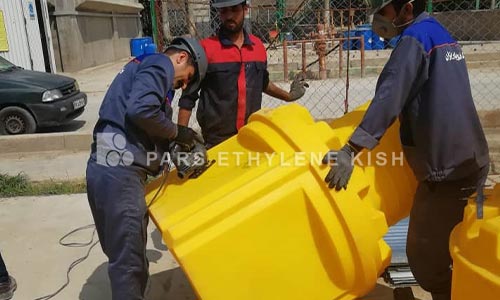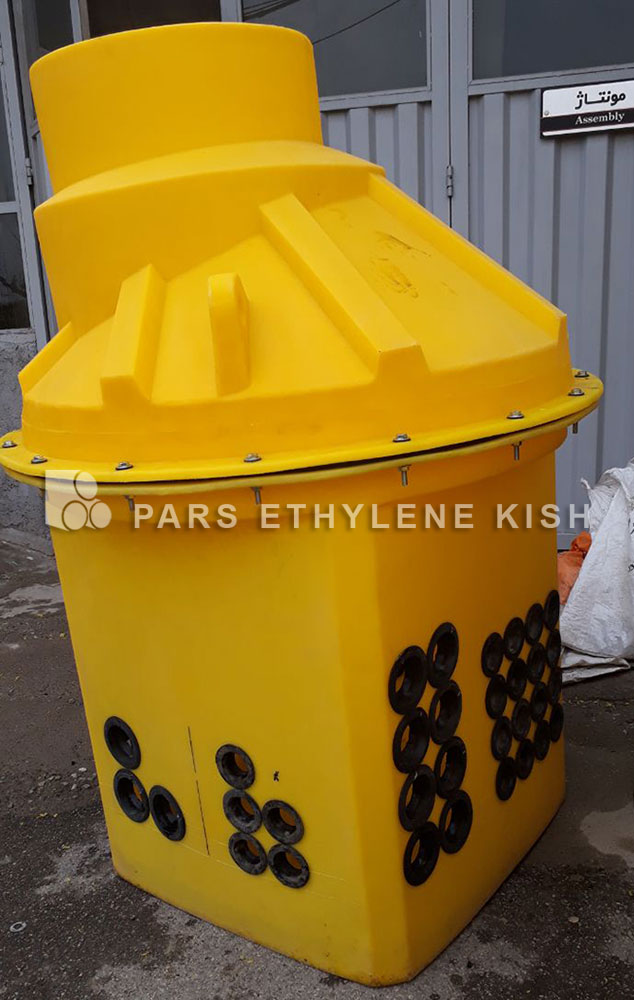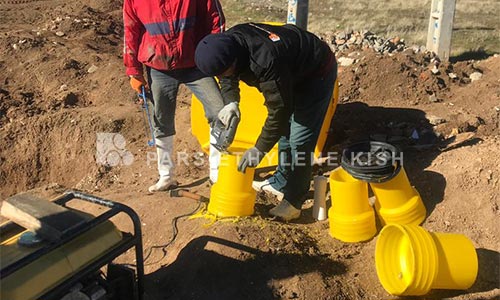Differences Between Handholes and Polyethylene Manholes
Handholes and polyethylene manholes serve as access points to underground utilities, but there are distinct differences between these two structures. This section explores the variations in size, design, and purpose between handholes and polyethylene manholes.
1. Size and Design Variations
One of the key differences between handholes and polyethylene manholes lies in their size and design variations.
Handholes are generally smaller and more compact compared to polyethylene manholes. They are designed to provide access to specific components or sections of underground utilities that require frequent maintenance, inspections, or repairs. The smaller size of handholes allows for easier installation and accessibility in confined spaces. They are often strategically placed along the underground utility network to provide convenient access points.
On the other hand, polyethylene manholes are larger in size and have a more spacious design. They are intended to provide broader utility access, accommodating personnel and equipment for more extensive maintenance tasks. Polyethylene manholes are commonly used in applications where a larger opening is required, such as sewer systems, underground vaults, or large utility junctions. Their size allows for easy entry and maneuverability during maintenance operations.
In terms of design, handholes and polyethylene manholes may have variations in shape and structure. Handholes often feature a compact rectangular or circular design, with a removable lid or cover for easy access. They may include additional components such as brackets or locking mechanisms for enhanced security.
Polyethylene manholes, due to their larger size and broader utility access, have a more complex design. They are typically cylindrical or rectangular in shape, with multiple entry points and chambers. These manholes are designed to accommodate various utility lines and allow for branching connections within the underground system.
The size and design variations between handholes and polyethylene manholes reflect their specific purposes and intended use. Handholes are compact and focused on providing access to specific components, while polyethylene manholes are larger structures designed for broader utility access and more extensive maintenance activities.

2. Purpose and Intended Use
Handholes and polyethylene manholes have distinct purposes and intended uses based on their specific characteristics and functionalities.
Handholes are primarily designed for frequent access to specific components or sections of underground utilities. They serve as access points that allow for easy maintenance, inspections, or repairs of cables, pipes, or other utility infrastructure. Handholes are strategically placed along the underground utility network to provide convenient access for technicians or personnel who need to carry out regular tasks or troubleshooting. They offer a compact and accessible entry point, making them ideal for applications that require frequent access and smaller-scale interventions.
Polyethylene manholes, on the other hand, serve a broader utility access purpose. They are designed to provide access to larger underground systems, such as sewer networks or utility junctions. Polyethylene manholes offer spacious openings that can accommodate personnel and equipment for more extensive maintenance activities. They are typically used in applications where a larger entry point is required to carry out inspections, repairs, or installations in the underground utility infrastructure. Polyethylene manholes are often strategically positioned at key points along the utility network to ensure efficient maintenance and easy access to critical components.
The purpose and intended use of handholes and polyethylene manholes are driven by the specific requirements of the underground utility systems they serve. Handholes are suited for applications where regular access is necessary, such as electrical or telecommunications systems, where cables may require frequent inspections or repairs. Polyethylene manholes are suitable for larger-scale utility networks, such as sewer systems, where more extensive maintenance and access are needed to ensure the proper functioning of the entire network.
By understanding the purpose and intended use of handholes and polyethylene manholes, professionals can make informed decisions regarding the selection and implementation of these access points based on the specific needs of their underground utility systems.

3. Applications and Accessibility
Handholes and polyethylene manholes have different applications and levels of accessibility based on their specific characteristics and functionalities.
Handholes find application in various industries and utility systems that require frequent access to specific components. Some common applications of handholes include electrical systems, telecommunications networks, and underground piping systems. They provide convenient access points for technicians to perform routine maintenance, inspections, and repairs on cables, wires, or pipes. Handholes offer a compact and easily accessible entry, allowing for efficient interventions in confined spaces. Their accessibility is designed for regular and localized maintenance tasks.
Polyethylene manholes, on the other hand, have broader applications in utility systems that require larger access points and more extensive maintenance operations. They are commonly used in sewer systems, wastewater treatment plants, and larger utility networks. Polyethylene manholes provide access to critical junctions, main pipelines, and underground vaults. They offer spacious openings that facilitate the entry of personnel and equipment for inspections, repairs, or installations. The accessibility of polyethylene manholes is designed for larger-scale maintenance activities and comprehensive assessments of the utility infrastructure.
In terms of accessibility, handholes and polyethylene manholes differ in the size of their openings and the level of entry they allow. Handholes typically have smaller openings that require minimal physical effort to access. They often feature removable lids or covers that can be easily lifted or opened. Polyethylene manholes, due to their larger size, may require the use of ladders or equipment for personnel to descend into the structure. They may have multiple entry points to accommodate different utility lines or chambers within the manhole.
The applications and accessibility of handholes and polyethylene manholes are determined by the specific utility systems they are designed for. Handholes are suited for localized and routine maintenance tasks, while polyethylene manholes are utilized in larger-scale utility networks where comprehensive access is necessary. By understanding their applications and accessibility, professionals can choose the appropriate access point for their specific utility infrastructure requirements.

Understanding the differences between handholes and polyethylene manholes is crucial in determining their appropriate use in various scenarios. Handholes are designed for frequent accessibility to specific components, while polyethylene manholes cater to broader utility access requirements. By recognizing these distinctions, professionals can make informed decisions about which structure is most suitable for their specific project needs.
In conclusion, handholes play a vital role in providing easy access to underground utilities in various industries. The production of handholes, particularly those made of polyethylene, involves several steps and considerations. Polyethylene handholes offer distinct advantages such as being lightweight, resistant to corrosion, and customizable in size and configuration.
While handholes and polyethylene manholes serve as access points to underground utilities, there are notable differences between them. Handholes are smaller and designed for frequent access to specific components, making them ideal for maintenance, inspections, and repairs. On the other hand, polyethylene manholes are larger structures that provide broader utility access, typically used for sewer systems, underground vaults, or large utility junctions.
Understanding the production methods, advantages, and differences between handholes and polyethylene manholes is crucial in selecting the appropriate access point for specific applications. By considering factors such as size, purpose, and intended use, professionals can make informed decisions when implementing underground utility systems.
Overall, handholes and polyethylene manholes contribute significantly to the efficient functioning and maintenance of underground utilities, ensuring easy access and facilitating necessary inspections and repairs.